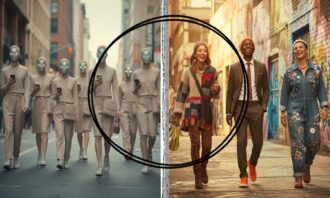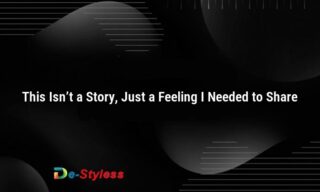Fashion has long been associated with rules, structure, and expectations. From matching colors to coordinating silhouettes, the conventional wisdom of dressing often revolves around balance and order. Yet, in recent years, a new wave of style has emerged that deliberately breaks these norms: layering with no logic. At first glance, this approach may appear chaotic or even careless, but upon closer inspection, it represents something deeper—a declaration of freedom from traditional standards.
Layering without logic embraces unpredictability and imperfection. It allows individuals to explore textures, colors, and shapes without fear of judgment or adherence to outdated fashion rules. In doing so, it transforms clothing into a medium of raw self-expression. This act is less about impressing others and more about affirming individuality, creativity, and liberation from convention.
Breaking Away From Rules
Traditional fashion guidance often emphasizes harmony: neutral tones with neutral tones, patterns balanced with solids, and proportions carefully calculated. Layering with no logic intentionally disrupts these guidelines. A formal jacket may be thrown over a sports jersey, or a flowing dress may be paired with oversized cargo pants. The effect is unconventional, yet undeniably personal.
Breaking rules in fashion challenges the assumption that style must always make sense. Instead, it celebrates the idea that clothing is subjective and that its meaning is shaped by the wearer, not by imposed standards.
Expression Beyond Aesthetics
Layering without logic is not just a visual statement; it is an emotional and psychological one. The refusal to conform communicates resistance to uniformity and an embrace of individuality. In this way, it becomes a form of rebellion—not necessarily against fashion itself, but against the rigid systems that dictate what fashion should be.
This style of dressing reflects freedom in thought as much as in clothing. It acknowledges that humans are complex, layered beings whose identities cannot be neatly categorized, just as their outfits resist simple logic.
The Role of Play and Experimentation
At its heart, layering with no logic is playful. It treats clothing as tools for experimentation rather than symbols of conformity. By mixing textures, patterns, and garments without premeditation, individuals rediscover the joy of creativity in everyday life.
This spirit of play is liberating because it shifts the focus from how others perceive the outfit to how the wearer feels in it. Dressing becomes less about perfection and more about exploration—a reminder that freedom often begins with curiosity.
Cultural Influences and Subcultures
This unconventional layering has roots in various subcultures that use fashion as a form of resistance. Punk, grunge, and streetwear movements have historically embraced mismatched and chaotic looks as symbols of defiance. Today, the idea of no-logic layering has re-emerged in avant-garde fashion circles and among youth who reject mass-produced sameness.
Cultural influences also shape how this style is interpreted. In some contexts, it symbolizes nonconformity, while in others, it is an embrace of abundance, creativity, or sustainability by reusing and repurposing what already exists.
Layering as Liberation
Wearing clothes without logic dismantles the idea that fashion must always be curated for approval. It allows people to dress in ways that feel authentic rather than acceptable. This liberation extends beyond style into identity: it suggests that people are not bound to fit into neat categories, whether in fashion, culture, or life.
Ultimately, layering with no logic reminds us that freedom is not found in order but in the courage to break order. It is a celebration of chaos as creativity, disorder as beauty, and imperfection as authenticity.
Conclusion
Layering with no logic may seem confusing to the untrained eye, but it carries profound meaning. It symbolizes a break from rigid rules and an embrace of individuality, experimentation, and freedom. Fashion, in this sense, is not about order but about expression—a reflection of life’s unpredictability and diversity.
By rejecting logic in layering, individuals reclaim control over their style and identity. The message is clear: clothing does not need to make sense to be meaningful. True freedom lies in the ability to define style on one’s own terms, transforming the act of getting dressed into a declaration of independence.
Glossary
- Layering: The practice of combining multiple pieces of clothing in a single outfit.
- Avant-Garde Fashion: Experimental, unconventional style that challenges traditional norms.
- Subculture: A cultural group that develops its own distinct values, practices, and aesthetics.
- Nonconformity: Refusal to align with prevailing social or cultural expectations.
- Sustainability in Fashion: Practices that prioritize reuse, recycling, and ethical production.
- Fashion Rebellion: Using clothing as a tool to challenge or resist societal norms.





